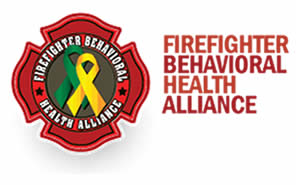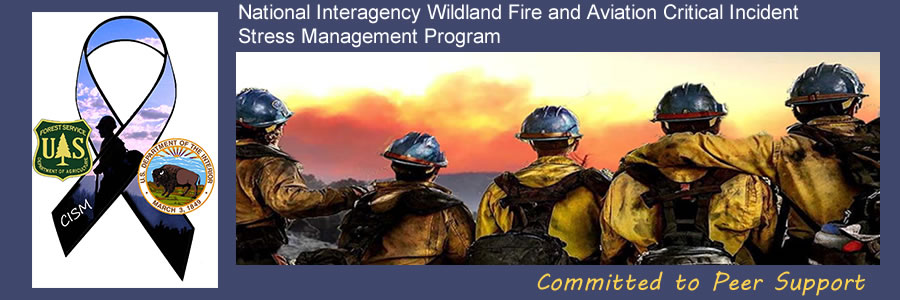Main Print Heading
Print Subheading
Stress in Wildland Fire and CISM Personnel
The nature of the job itself is one source: seeing events regularly that others may not see in a lifetime can change your perspective on the world. The strain placed on fire and aviation personnel throughout their career is not necessarily caused by one incident or traumatic event. Instead, the strain that leads to stress occurs through years of traumatic incidents and stressful experiences, which accumulate and often lead to psychological and physical health problems.

Current approaches to addressing these problems tend to focus on assistance and treatment following traumatic events or after symptoms emerge. While these essential efforts must continue, the science of positive psychology suggests a proactive approach through the development of resilience skills. Therefore, a resilience training program is recommended that considers the wildland fire culture and focuses on developing increased self-efficacy through increased social support and flexible, accurate thinking habits that promote optimism.
Secondary Traumatic Stress
Secondary traumatic stress is the emotional duress that results when an individual hears about the firsthand trauma experiences of another. Its symptoms mimic those of post-traumatic stress disorder (PTSD). Accordingly, individuals affected by secondary stress may find themselves re-experiencing personal trauma or notice an increase in arousal and avoidance reactions related to the indirect trauma exposure.
They may also experience changes in memory and perception; alterations in their sense of self-efficacy; a depletion of personal resources; and disruption in their perceptions of safety, trust, and independence. The difference between secondary trauma and vicarious trauma is that secondary trauma can happen suddenly, while vicarious trauma is a response to an accumulation of exposure to the pain of others. The symptoms of secondary trauma are nearly identical to those of vicarious trauma. Read More

Cumulative Stress
Cumulative stress is a common enough condition for wildland fire personnel.. Unfortunately, it is subtle in its buildup and complex in its symptomatology, and is usually ignored by the individual and the organization until it’s too late.
Cumulative means “increasing or increased in quantity, degree, or force by successive additions, something that is growing by accumulation.” In some cases, such as a success, accumulation is a great asset, but when it comes to seeing and dealing with certain scenarios day in and day out, accumulation can become the cause of a disease or injury.
Daily occurrences, traumatic events, stressors from the job, and other challenges faced by wildland fire personnnel get filed away over the course of a career. Subsequently, we continue moving from incident to incident with very little thought, other than wondering what lies ahead. These incidents may be filed away but they are not forgotten. In fact, one day the slide show of incidents will begin to take its toll on the person, rendering him worse for wear. Read More

Compassion Fatigue and Vicarious Trauma
Compassions fatigue, is sometimes referred to as "vicarious trauma" however, conceptually, it is not the same thing. Compassion fatigue is described as the natural, avoidable, and treatable consequence of working with suffering people, regardless of the cause of that suffering. Read More
Vicarious traumatization, in comparison, is the cumulative transformative effect on those who are routinely exposed to victims of traumatic life events. Vicarious traumatization can emerge suddenly at any time during one’s career, while burnout comes on gradually. Read More
Burn Out
Burnout is usually the result of prolonged stress or frustration, resulting in exhaustion of physical strength, emotional strength and/or motivation (Maslach, 2003). Burnout tends to be associated with the workplace, and is often a predictable outcome when the work environment demands a great deal. One of the characteristics of burnout is that it occurs over a fairly long period of time and is cumulative. It does not afflict a person after one bad day. Read More

Post Traumatic Stress and PTSD
Post Traumatic Stress (PTS) symptoms are common after a traumtaic event and may improve or resolve in less than a month or so. PTSD symptoms are more severe, persistent, interfere with daily functioning, and last for more than a month. Most people with PTS do not develop PTSD. You can develop PTSD without first having PTS.

Delayed Stress Reactions
Most reactions and symptoms are first seen or felt at the scene of an incident, or shortly thereafter. However, sometimes the reactions do not surface for days, weeks, or in some cases even months after an incident. This is often called delayed stress.
Delayed stress reactions are like those that occur at the scene, in that they are the result of a specific incident. This delay can be caused by a number of different reasons, including the person trying to suppress their emotions and reactions. This delayed stress is more difficult to recognize and deal with because of the passage of time since the incident. Not only it more difficult relate the reactions to a specific incident, but this time delay with also frequently distort or exaggerate the typical symptoms.
This delayed stress is also much more difficult to resolve since it has been part of the person for a longer time and has established roots. Frequently, it will take professional help to resolve, and will be beyond the scope of any ability of peer support personnel.
Additional Information
International Critical Incident Stress Foundation
Defense Center of Excellence
 » Read More
» Read More
Share the Load
 » Read More
» Read More
Geograhpic Area CISM Information
- Great Basin
- Southwest
- Rocky Mountain
- Alaska
- Southern Area
- Eastern Area
- Northern California
- Southern California
- Northern Rockies
- Northwest
Employee Assistance Programs
Other Resources
National Suicide Prevention Lifeline
1-800-273-TALK (8255)
» Read MoreNational Helpline
Free, confidential, 24/7, 365-day-a-year treatment referral and information service.
» Read MoreVeterans Crisis Line
Disaster Distress Lifeline
![]() Crisis counseling and support to people experiencing emotional distress related to natural or human-caused disasters.
Crisis counseling and support to people experiencing emotional distress related to natural or human-caused disasters.

